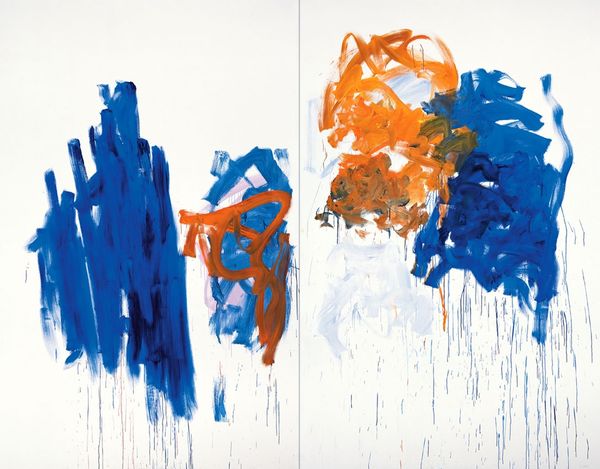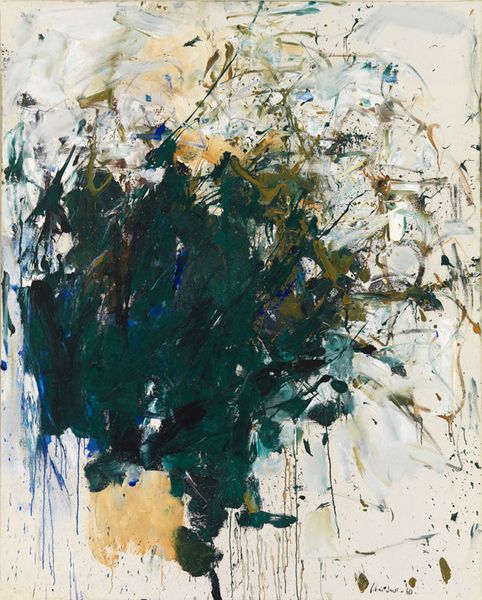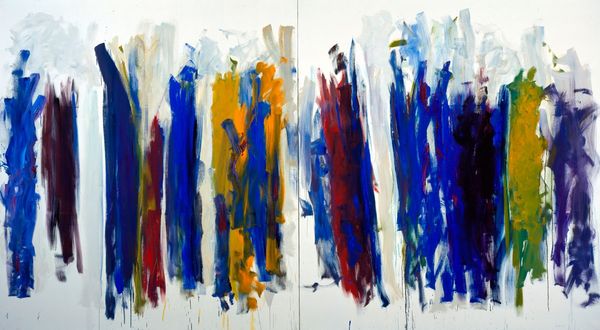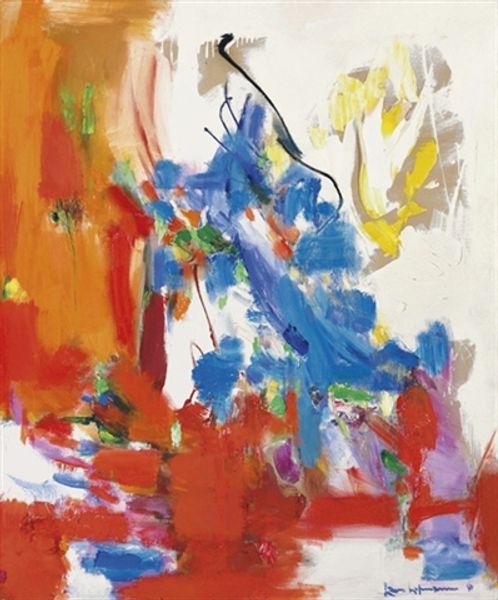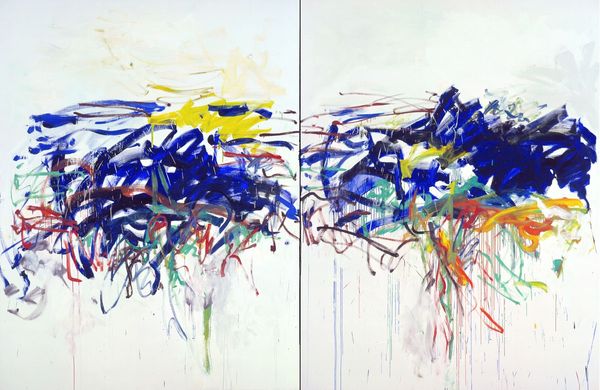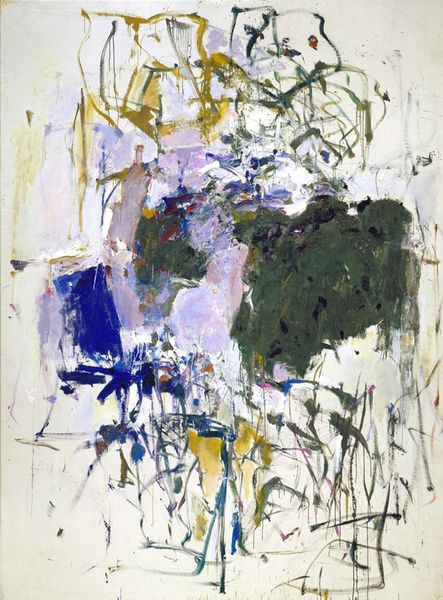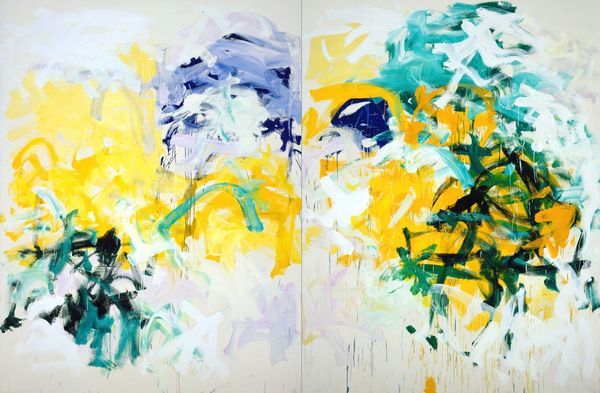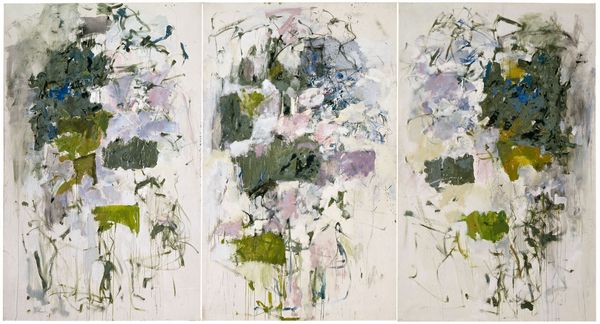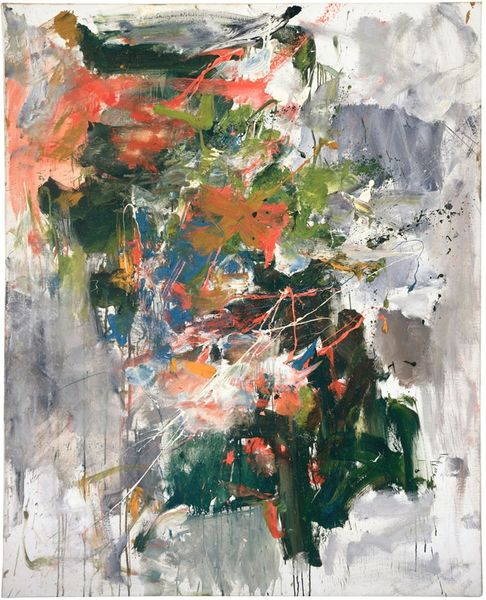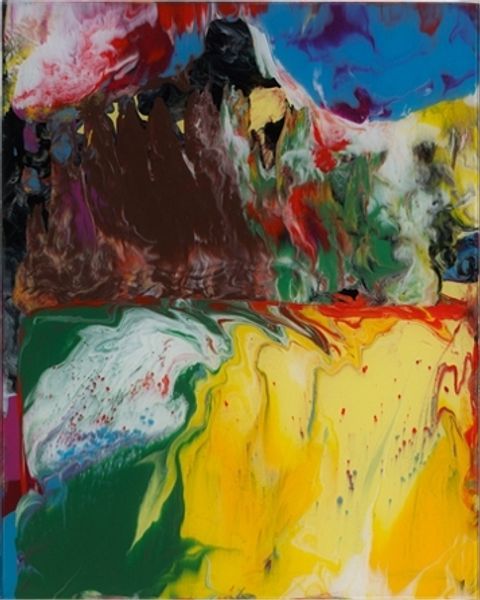
Copyright: Joan Mitchell,Fair Use
Editor: Right, let's talk about Joan Mitchell's "Trees," from 1991, done in acrylic on canvas. It's striking, these vertical strokes of color against the white… It feels… agitated, but also quite powerful. What do you see in this piece, especially considering it's titled "Trees"? Curator: It’s impossible to separate Mitchell's work from its historical context. A woman navigating the male-dominated world of Abstract Expressionism, and crucially, pushing back against that domination through her intensely personal language. This late work, made when she was battling cancer, can be read as a struggle, the “trees” reaching, clawing. But toward what? Are they symbols of resilience? Are they elegies? Think about landscape tradition – typically a ‘feminine’ genre but here rendered through raw physicality, a traditionally 'masculine' approach. What does this supposed gender paradox do for your understanding? Editor: So you're saying the title itself could be ironic, a sort of commentary on expectations of female artists and the natural world? I hadn’t thought of that. Curator: Precisely. And it is vital to ask: What did Mitchell truly want her trees to say? What societal forces – patriarchal forces – might have informed and constrained her expression? Is this assertion of physical gesture almost a fight for visibility? Editor: I see. The act of painting becomes a political one. The aggressiveness and bold colors really drive home that interpretation. I initially just saw the abstraction. Curator: It’s about layering your understanding, from the formal elements to the socio-political currents informing the work. Mitchell grapples with vulnerability but doesn’t surrender to it. It's more complex and, for me, much more compelling than simply reading her biography into the paintings. Editor: This conversation has definitely expanded how I’ll look at abstraction, beyond just aesthetic qualities. Thanks! Curator: My pleasure. Never forget to interrogate the historical narrative embedded within art, always ask: Who isn't represented and who is doing the representing.
Comments
No comments
Be the first to comment and join the conversation on the ultimate creative platform.
